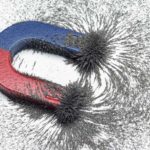Why does a balloon stick to the ceiling after you rub it on your head? The answer is static electricity. What is static electricity? Static electricity is that little zap you feel when you touch metal after walking across the carpet in your socks. How does it work? Electrons are miniscule particles, so tiny they can’t be seen with the naked eye. They have a negative charge. Proton’s are also miniscule particles too small to see, but they have a positive charge. Likes repel and opposites attract, so electrons are attracted to protons. Electrons move around, and sometimes they’re found in abundance. This movement of electrons is what we call electricity. It’s also the reason why static electricity exists, which is why it causes shocks on doorknobs and lightning strikes.
When you rub a balloon on your head, you transfer electrons from your hair to the balloon. This makes the balloon have more protons than electrons, meaning it has a positive charge. When you let go of the balloon, it sticks because all the other objects around it are negatively charged thanks to their electrons.
The same thing happens when you rub your socks across a carpet. The electrons that are missing in your socks get attracted to the protons in the carpet. When you touch a metal object such as a doorknob, electrons rush back into your body, creating that little spark that we often refer to as a “shock”.
It is worth noting that the same thing happens in the sky during storms. Electrons jump from the ground towards the clouds, creating a similar though much larger spark. Which we call lightning.
Returning to our example of a balloon, the positive charge in the balloon attracts all of the negative charges (electrons) in a wall or other objects.
Experiment:
Rub a balloon against your hair. Then use it to attract an empty soda can. You can move the can across a table, just like it is a magnet.
Important things to remember:
- Static electricity occurs because the negatively charged electrons in objects are attracted to the positively charged protons in other objects.
- Only electrons can move from object to object. Protons never move.
- If an object has too many electrons it will become negatively charged, and will then be attracted to other objects that are more positively charged.
- In order to balance themselves out, electrons will move from one object to another creating shocks, lightning, and electricity.






